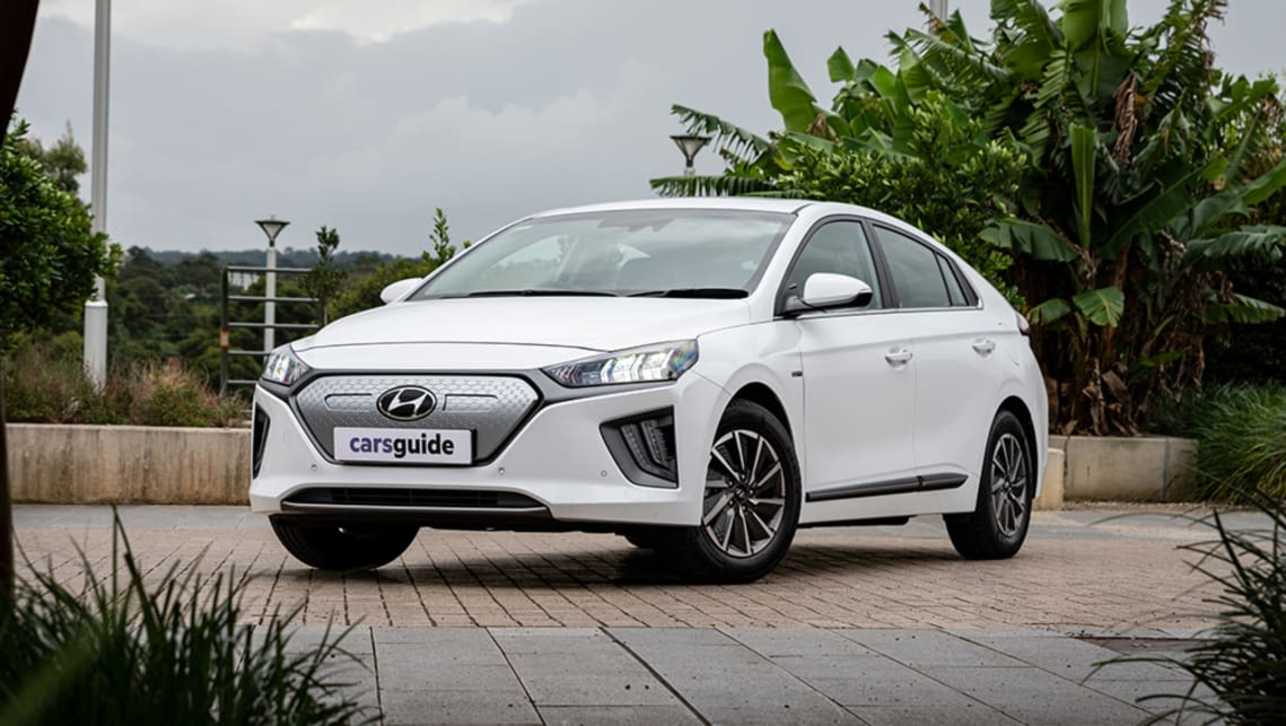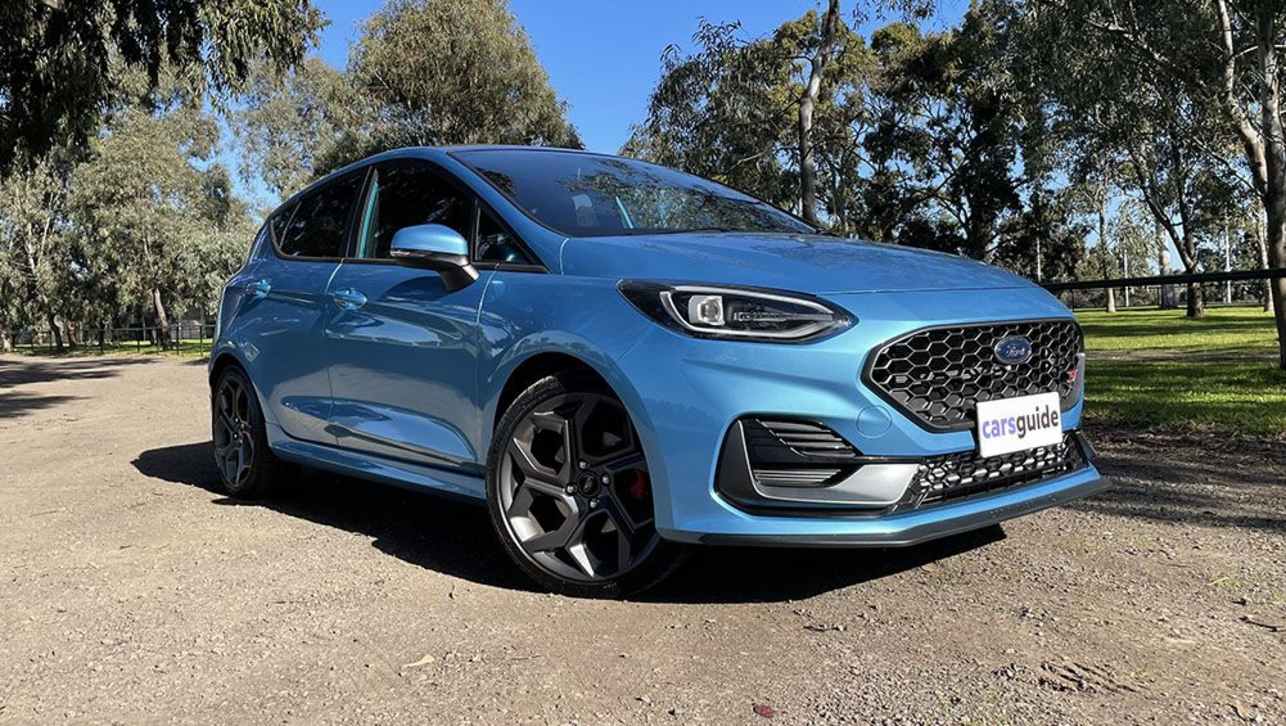It has been among the weirder new-car years on record in Australia, with almost all models extremely hard to come by — with lengthy ordering queues and shipping delays — and their prices seemingly only heading in one direction. And it all looks like all of that will continue into the new year, too.
But no matter how hard it’s been to get into a Toyota LandCruiser, a 70 Series, a Nissan Patrol, a RAV4 Hybrid or a Mazda CX-5, I can guarantee this next list of cars will be even harder to secure.
In fact, they’ll be impossible. Mostly because they have been pushed off the-new car cliff. Blame slow sales, or changing tastes, but here are the cars that are now rusting in pieces.
Ford Fiesta

The once mega-popular (I can guarantee you’ve either owned one, or know someone who has) Ford Fiesta is gone for good, and not just in Australia, but globally, too.
Ford says it will kill off the Fiesta by June next year, ostensibly to free up research and development and factory space for the brand’s EV rollout, but the decision won’t sting too badly in Australia, where the model was already on life support.
We never got the full seventh-generation Fiesta line-up in Australia, with the brand instead launching only the fire-breathing ST model in our market - indicative of our growing tastes for small SUVs over passenger cars.
And so, after 47 years on sale around the world, the Fiesta festival is over.
Gone, but not forgotten.
Ford Focus
.jpg)
It’s not just the Fiesta, but its Ford Focus sibling, too. Again, it arrived only in go-fast ST trim — a pretty strong sign of what was to come — but in August this year the brand confirmed it was headed for the automotive graveyard, ahead of what’s expected to be a global axing in 2025.
“Both the Focus ST and Fiesta ST have been segment-defining hot hatches for Ford Australia and have put smiles on the faces of enthusiasts across the country, but…we’ve made the difficult decision to call time on these iconic hot hatches in Australia,” Ford said in a statement.
Hyundai Ioniq

The Hyundai Ioniq was always seen as the canary in Hyundai’s EV coal mine, and so its future was always in doubt once the brand started rolling out the much-cooler Hyundai Ioniq 5, and the models that will follow it.
Still, the Ioniq was a mega-competent offering — even if it definitely lacked the wow factor of the current crop of electric vehicles — and arrived as a hybrid, plug-in hybrid or as a full EV.
It launched globally in 2016, and hit Australia in 2018, but the bell has now tolled for the Ioniq, with no replacement in sight.
Toyota Prius

The Prius began its life as the subject of many an automotive joke some 21 years ago in Australia, but Toyota saw something in the hybrid that a lot of us didn’t, and as it turns out, the joke was on us.
Because two decades later all anybody wants is a hybrid vehicle, and especially those made by Toyota, with the Yaris Cross Hybrid, Corolla Cross Hybrid, RAV4 Hybrid and Kluger Hybrid all following in the footsteps of that first trend-setting Toyota, the humble Prius.
But the bell has at last tolled for the vehicle that started it all, and so after more than two decades and four generations, Toyota stopped importing the Prius this year, and then pulled the model from sale.
But hope is not lost, Prius fans. Toyota has revealed a stunning new version of its trailblazing hybrid, thought it’s not yet confirmed for Australia.
Make it so, Toyota.
Mitsubishi Pajero

This one is more like a death by one thousand cuts, I know, but in 2022 we finally bid goodbye to one of Mitsubishi’s most iconic nameplates, with the final examples of the Pajero finding buyers.
Mitsubishi Pajero production officially ended way back in March 2021, but the final stragglers were assigned to buyers at the beginning of this year.
And with no replacement on the horizon, those customers are now holding a piece of automotive history.
The Pajero was powered by a 3.2-litre turbo-diesel four-cylinder engine, producing 141kW/441Nm — a little under the odds by today’s standards — and was farewelled with the fittingly titled Final Edition, of which 800 made their way to our shores.
“Remaining Pajero stock is being delivered over the coming weeks, to both fleet and private customers,” Mitsubishi told us back in February.
Honourable mentions
While the model names live on, we also said goodbye to plenty of engine/transmission combos, or trim levels, in some of Australia’s most popular models.
The introduction of all the all-new Ford Ranger, for example, meant the demise of the 3.2-litre, five-cylinder turbo-diesel engine, while Mazda has said goodbye to its entry-level 2.0-litre manual offering in the CX-5. And in relaunching the Niro, Kia has said goodbye to it plug-in hybrid powertrain, instead launching with Hybrid and BEV models only.


.jpg)


.jpg)






.jpg)

.jpg)
.jpg)
.jpg)
.jpg)

.jpg)
.jpg)
.jpg)
.jpg)
.jpg)
_0.jpg)




.jpg)
Comments